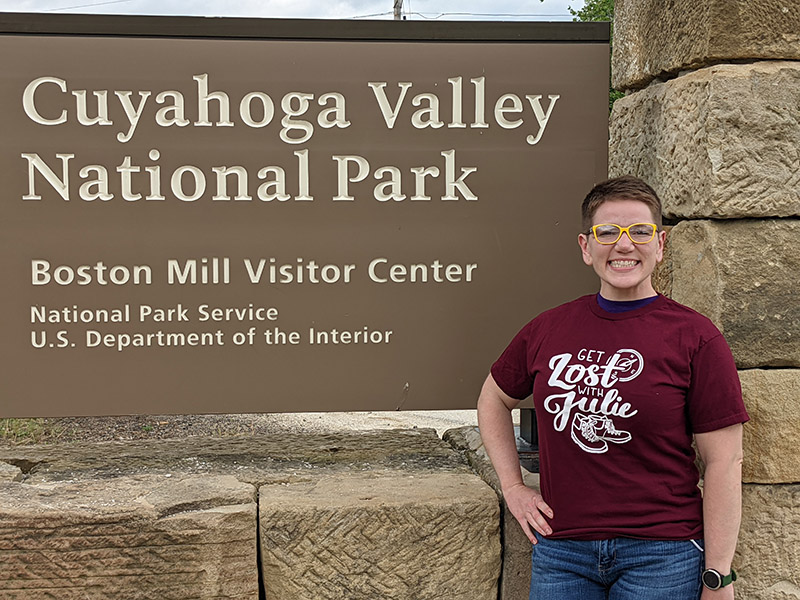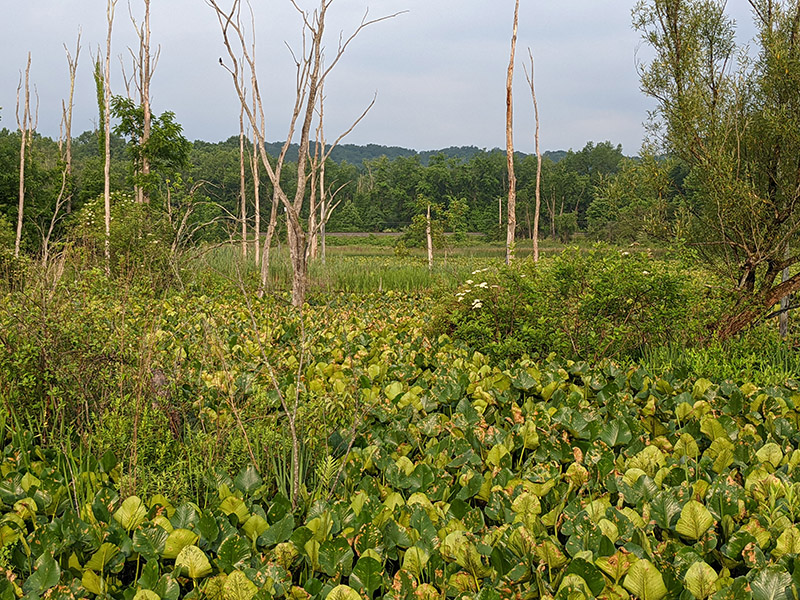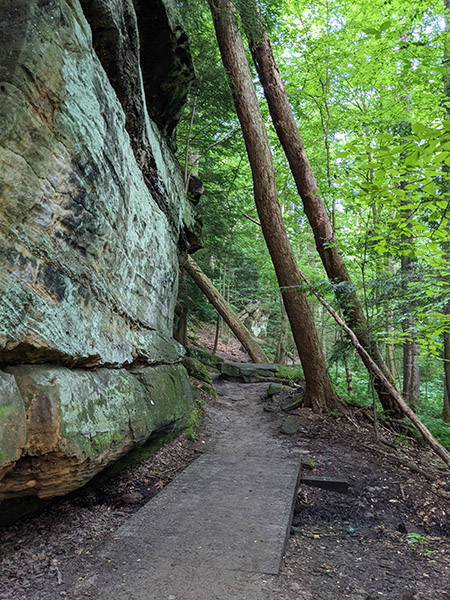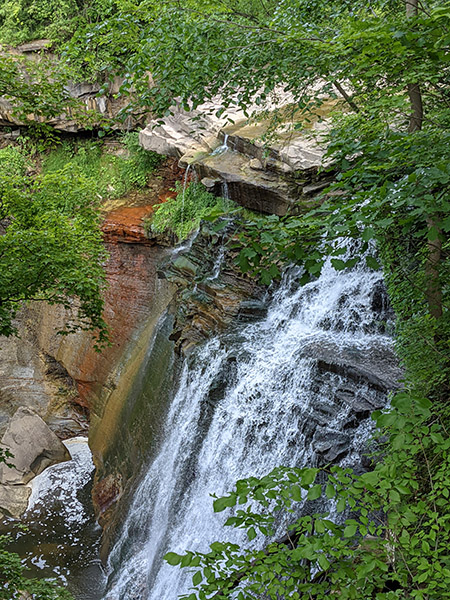

Cuyahoga Valley National Park lies between Cleveland and Akron, Ohio. Originally established in 1974 as the Cuyahoga Valley National Recreation Area, it became a National Park on October 11, 2000. (National Park Service, 2021)
The name “Cuyahoga” may ring a bell – it is the notorious waterway that caught fire in 1969, becoming a touchstone for the first Earth Day march in 1970, along with the establishment of the Environmental Protection Agency that same year. Interestingly, 1969 was not the first time the Cuyahoga River caught fire – according to Smithsonian Magazine (Boissoneault, 2019), the first record of a fire on the river was in 1868. In 1968, a $100 million bond fund was approved by voters to fund the cleanup of the river, had this occurred today, some might consider it a “green” bond initiative. (Boissoneault, 2019)

Beaver Marsh
Cuyahoga Valley National Park now encompasses more than 30,000 acres, including sections of the Cuyahoga River along with historic portions of the Ohio and Erie Canal. The Beaver Marsh sits upon a reclaimed area that used to house an auto repair shop and a salvage yard – today it is a 70-acre recovered wetland. We did an easy hike through the Beaver Marsh, about a half mile from the parking lot we encountered a boardwalk with plenty of spots to sit and take in the reclaimed natural beauty – turtles, great blue herons, and lily pads with flowers the size of my head. Beyond the boardwalk, the trail connects to the towpath that snakes through the park. In 2020, according to the National Park Service, Cuyahoga Valley National Park was the 7th most visited National Park with 2.8 million recreational visits. (National Park Service, 2021)

Ledges trail

Brandywine Falls
We did two of the most popular hikes in the park: the Ledges and Brandywine Falls. While the Ledges trail is far more rugged, with steep climbs and descents, the Brandywine Falls trail was a 1.5 mile loop we saw folks traversing in anything from hiking boots to flip flops. The 65-foot waterfall at Brandywine Falls served an economic function 200 years ago – a sawmill was built upon it in 1814 – the only remaining remnant of the Village of Brandywine which was built around the mill is the bed and breakfast adjacent to the trail. While there are more than 125 miles of trails at Cuyahoga Valley National Park, we were able to hit the three most popular spots on an overnight stay at the park, leaving hikes that are more advanced for our next visit.
Boissoneault, L. (2019, June 19). The Cuyahoga River Caught Fire at Least a Dozen Times, but No One Cared Until 1969. Retrieved from Smithsonian Magazine: https://www.smithsonianmag.com/history/cuyahoga-river-caught-fire-least-dozen-times-no-one-cared-until-1969-180972444/
National Park Service. (2021, July 2). Cuyahoga Valley National Park . Retrieved from National Park Service: https://www.nps.gov/cuva/index.htm
National Park Service. (2021, February 25). Visitation Numbers. Retrieved from National Park Service: https://www.nps.gov/aboutus/visitation-numbers.htm

